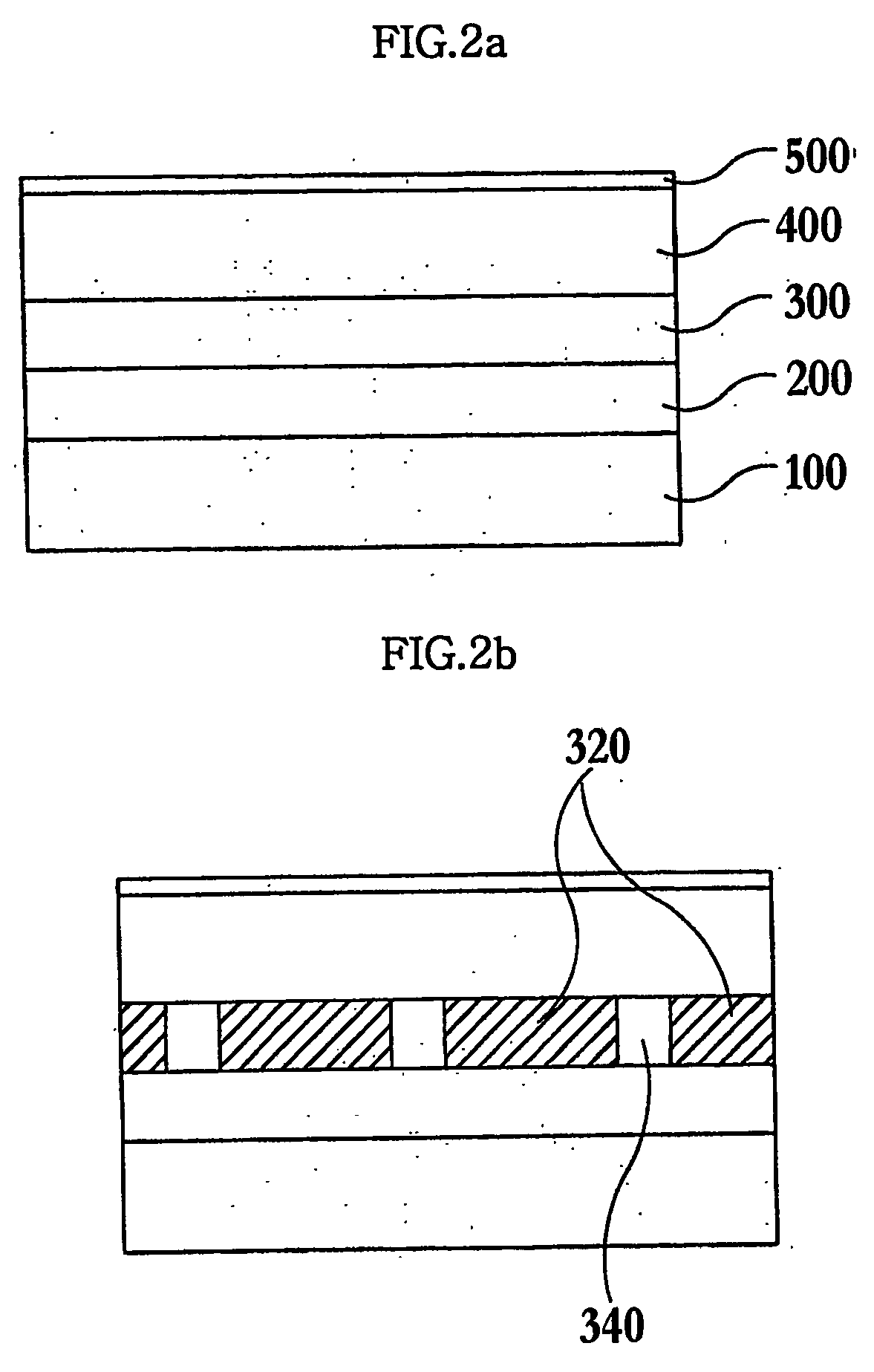Phase transition method of amorphous material using cap layer
a phase transition and amorphous material technology, applied in the direction of layered products, layered products, chemistry apparatus and processes, etc., can solve the problems of low productivity of laser thermal treatment process, inconvenient phase transition, and high price of associated equipmen
- Summary
- Abstract
- Description
- Claims
- Application Information
AI Technical Summary
Benefits of technology
Problems solved by technology
Method used
Image
Examples
Embodiment Construction
[0055] Now, the preferred embodiments according to the present invention will be described in details with reference to the accompanying drawings. The same parts are referred to as the same name although they are indicated with different reference numerals.
[0056]FIGS. 2a to 2d are schematic views illustrating a preferred embodiment of the present invention. The material that is thermally treated in the present invention comprises a dielectric substrate 100, a buffer layer 200 deposited on the dielectric substrate 100, an amorphous material 300 deposited on the buffer layer 200, a cap layer 400 formed on the amorphous material 300, and a metal 500 deposited on the cap layer 400 (see 2a).
[0057] The dielectric substrate 100 is not limited to a specific material. However, it is preferable that the dielectric material a material selected from glass, quartz, a single crystal wafer covered with an oxide film is used as the dielectric material in order to ensure the uniformity of the temp...
PUM
| Property | Measurement | Unit |
|---|---|---|
| temperature | aaaaa | aaaaa |
| thickness | aaaaa | aaaaa |
| thickness | aaaaa | aaaaa |
Abstract
Description
Claims
Application Information
 Login to View More
Login to View More - R&D
- Intellectual Property
- Life Sciences
- Materials
- Tech Scout
- Unparalleled Data Quality
- Higher Quality Content
- 60% Fewer Hallucinations
Browse by: Latest US Patents, China's latest patents, Technical Efficacy Thesaurus, Application Domain, Technology Topic, Popular Technical Reports.
© 2025 PatSnap. All rights reserved.Legal|Privacy policy|Modern Slavery Act Transparency Statement|Sitemap|About US| Contact US: help@patsnap.com



